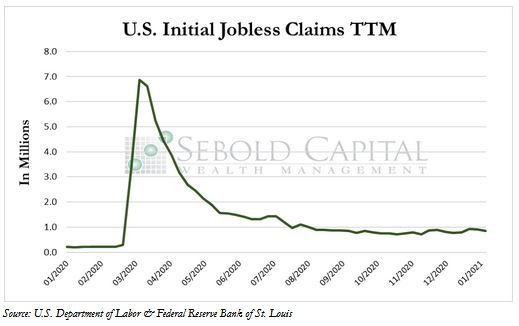US Initial Jobless Claims, provided by the US Department of Labor, provides underlying data on how many new people have filed for unemployment benefits in the previous week. One can gauge market conditions in the US economy around employment; as more new individuals file for unemployment benefits, fewer individuals in the economy have jobs. In normal times, this means people have less money to spend. Historically, initial jobless claims tended to reach peaks towards the end of recessionary periods, such as on March 21, 2009, when 661,000 new filings were reported.
Last week, initial claims fell by 7.33% to a total of 847,000. However, the number of new individuals filing for unemployment insurance remained 8.31% higher than it was the previous month. The number of continued jobless claims also decreased, falling by 203,000 or 4.08% from the previous week to a total of 4.77 million. The number of initial unemployment claims remain significantly above the long-term average of about 371,000.
Many of the restrictions imposed in order to contain the rise in COVID-19 cases are being lifted, leading to a drop in unemployment claims. When these restrictions were initially imposed, they led to a substantial spike in the number of workers being temporarily or permanently laid off. As these restrictions continue to be eased, the number of claims is likely to decease even further, but job cuts are unlikely to fully subside until the industries that have been the most impacted—such as the service industry—are allowed to fully reopen.

January 28, 2021
